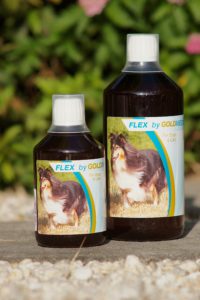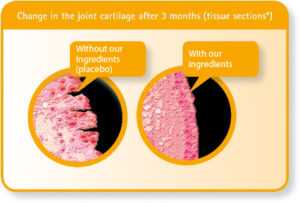Arthritis, Osteoarthritis (OA) or osteoarthritis are common problems in horses and dogs.
Not only older animals are affected, but younger animals also fall prey. It is estimated that approximately 1 in 3 in horses experience this condition and 1 in 4 in dogs. OA has devastating effects on the animal and certainly on its performance as an athlete.
OA can develop in any joint and is, for example, the main cause of hock joint pain.
In summary, OA usually starts as inflammation of the synovial fluid (synovitis) due to trauma or overload, progresses to inflammation of the cartilage (arthritis) and becomes osteoarthritis (OA)/osteoarthritis when the bone around the joint is also deformed.
OA, often referred to as degenerative joint disease, is characterized by deterioration of articular cartilage accompanied by changes in the bone and soft tissues of the joint. The end stage of OA results in a net loss of articular cartilage, causing pain, deformity, loss of motion and impaired function. Synovial joints, where most problems occur, have two main functions: allowing movement and transferring load. Synovial joints consist of the articulating surfaces of the bone, covered with articular cartilage, secured by a joint capsule and ligaments, and have a cavity containing synovial fluid.
Hyaluronic acid with its ideal lubricating properties is one of the main components of the synovial fluid. Articular cartilage is a tissue that acts as a shock absorber for bones and has a frictionless surface that is bathed in this synovial fluid. This tissue consists of sparsely distributed chondrocytes (cartilage cells). The extracellular matrix provides the compressive strength of the cartilage and is mainly composed of collagen and proteoglycans. Collagen forms a fibrous network that gives cartilage its tensile strength. The proteoglycans hydrate the collagen network and provide the tissue with viscoelastic properties and the ability to withstand mechanical compression. When the joint capsule is disrupted, additional proteolytic enzymes are secreted into the synovial fluid that further break down the collagen and proteoglycans, starting the process of articular cartilage loss. Because it breaks down quickly, subchondral bone is responsible for changing the shape and congruence of the joint. Soft tissues of the joint include the intra-articular ligaments, joint capsule, menisci, and synovial membrane. Intra-articular ligament damage can stimulate an inflammatory response and alter the loading characteristics of the joint surface. Acute synovitis and capsulitis can cause significant clinical damage to the joint and also contribute to the degenerative process through the release of cytokines, inflammatory mediators and enzymes.
Fortunately, veterinarians have several ways to manage and treat OA.
First up are the oral supplements; they both provide building blocks and prevent some steps of the degradation process.
Acetyl glucosamine is part of both cartilage and hyaluronic acid. Therefore, glucosamine is widely used orally. Because the results with glucosamine are quite variable, acetyl-glucosamine itself is sometimes used, which is more absorbable and no longer needs to be converted by the body from glucosamine to acetyl-glucosamine. Research on acetyl-glucosamine indicates a reduction in pain and swelling.
MSM (methylsulfonylmethane) and curcumin are known to be anti-inflammatory
Research on collagen hydrolysates has shown that compositions with the correct molecular weight and molecular composition stimulate the chondrocytes to produce fewer degradation enzymes and more cartilage polymers resulting in cartilage repair.
Also interesting is the experience of our veterinarians that this collagen-hydrolyzate composition has particularly beneficial effects in laminitis.
As mentioned in our sheet on prebiotics, there is also a direct connection between the gut microbiome and the joints; suggesting that favoring the microbiome may also have positive effects on joints.
In addition to the oral supplements, there are NSAIDs such as phenylbutazone (bute) and firocoxib, which, however, have adverse side effects (read this), and joint injections with anti-inflammatories, hyaluronic acid or other gels, and PRP and IRAP treatment.




